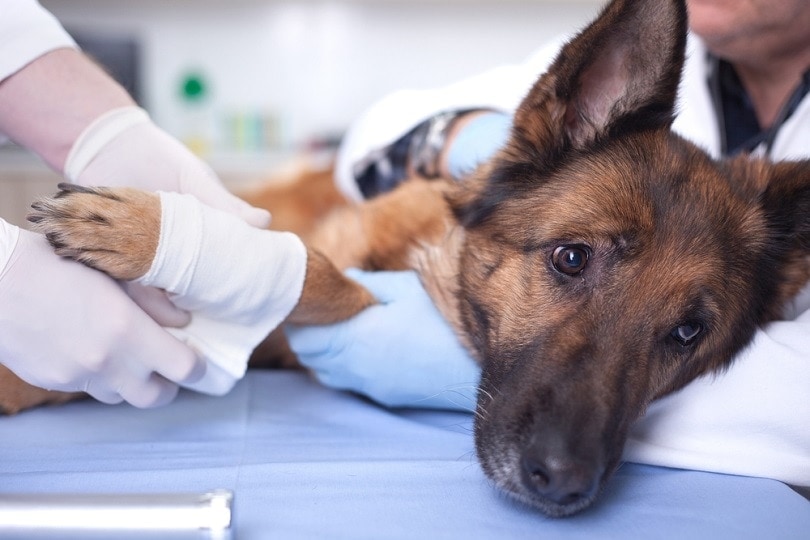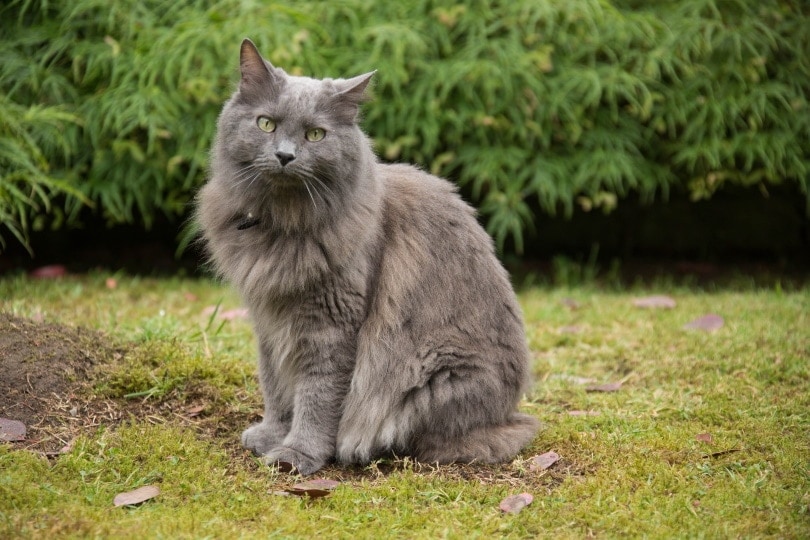6 Benefits of Cat Grass for Your Cat: Science-Based Facts & FAQ

Updated on
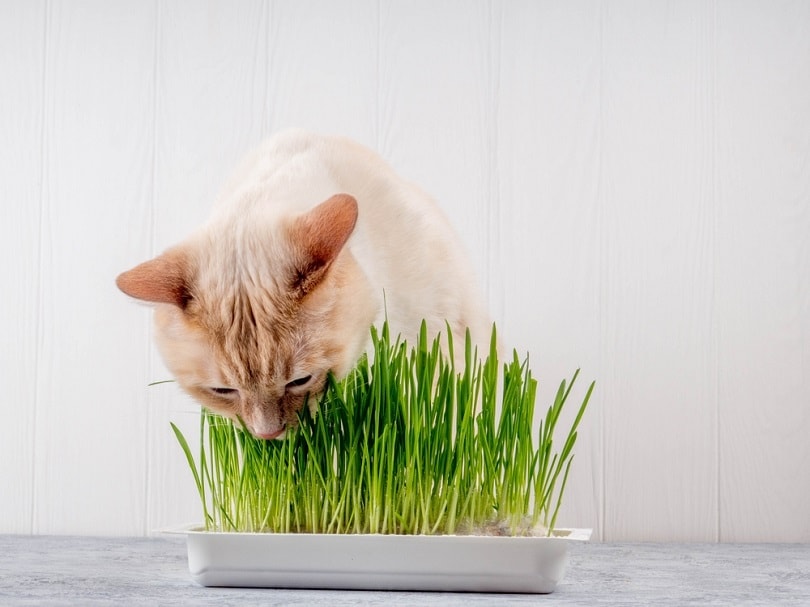
If you’ve ever taken your cat out into your backyard to enjoy the warm sunshine and watch the birds, they probably ignored both of those things, headed straight to a tasty patch of grass, and started chomping down. This is completely normal behavior for cats. It’s actually something that your cat is hardwired to do.
Don’t worry, it’s actually healthy for your cat to eat cat grass. There are several key benefits of cat grass for your feline pal. If your cat is an indoor cat, you can even grow cat grass for them so that they can enjoy the same benefits as outdoor kitties.
Keep reading to learn more about the benefits of cat grass and how to grow it safely indoors.
What Is Cat Grass?
Cat grass is really a variety of grasses that cats like to snack on. Typically, the healthiest versions are cereal grain grasses such as:
- Oat
- Wheat
- Barley
- Rye
- Alfalfa
It’s important to note that cat grass isn’t the same thing as catnip. Catnip is a member of the mint family and has a behavioral effect on cats. Cat grass does not.
The 6 Benefits of Cat Grass
Even though cats are carnivores, they still enjoy a salad now and then, which comes in the form of cat grasses. These can offer many benefits for your cat’s health and your cat will enjoy eating them.
1. Hairball Prevention
If you have a long-haired cat, or even a short-haired one prone to hairballs, you know how awful it can be watching them try to cough up hair. Cat grass contains a significant amount of fiber, which makes it easier for your cat to pass their hairballs.
2. Indigestion Relief
Cat grass can also help relieve indigestion. It’s theorized that one of the reasons cats have developed the instinctual desire to snack on grass in the wild is because it helps them to vomit to get rid of the non-digestible parts of the small animals they eat. Cats cannot fully digest things such as hair, bones, and feathers, so high-fiber grass helps them eliminate it from their stomachs.
3. Laxative
Similar to encouraging vomiting, cat grass can also have a laxative effect on cats. This can ensure they aren’t having trouble digesting and passing their food.
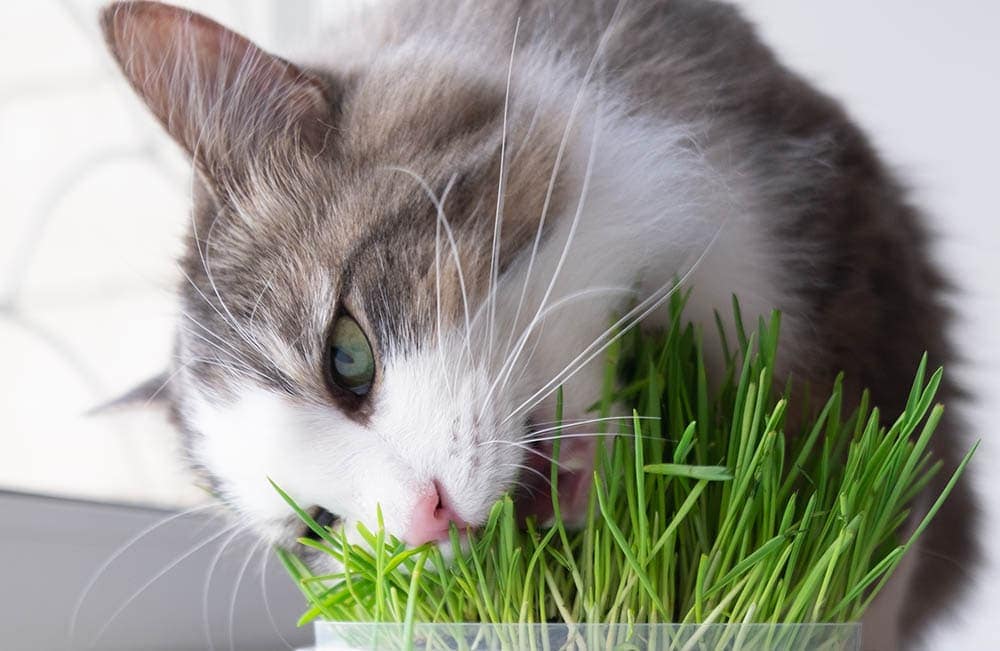
4. Mental Stimulation
Most cats love to play. The shape and texture of the grass attract your cat’s attention and stimulate their hunting instinct. Chewing on cat grass can also give a bored kitty something to do.
5. Parasite Control
Cat grass can also help control parasitic infections in cats. It’s believed that the grass stimulates their gut muscle activity and helps them to induce vomiting or the release of parasites in the stool. This is one way a cat’s body naturally expels parasites.
6. Vitamins and Minerals
Lastly, cat grass is full of beneficial vitamins and minerals that your cat needs. Cat grass is an excellent source of:
- Vitamins A, B, and D
- Folic Acid
- Chlorophyll
As an added benefit, chlorophyll can even help freshen your cat’s breath.
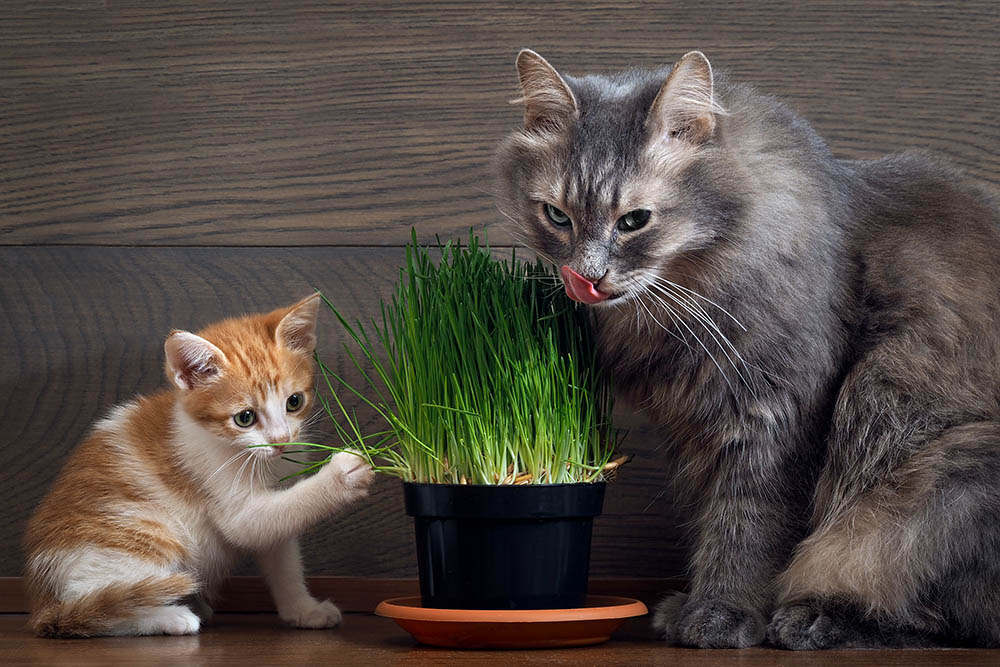
Growing Cat Grass
If you’re going to give your cat grasses as a regular part of their diet, it’s best to give them grass that is grown inside of your home. The grass in your yard can be contaminated with pathogens, pesticides, and other toxic substances. if you’re feeding your cat grass from inside your home, it’s unlikely they’ll consume something toxic. Cat grass is quite simple to grow. Many pet stores sell kits that come with a container, seeds, soil, and instructions for growing the grass.
You’ll need to plant the grass in the container it came with. Water it according to the directions on the package. Once the seeds sprout, it will take about 10–14 days for the grass to be ready for your cat to eat. Usually, the grass should reach 4 inches by that time. You don’t need to remove the grass from the container. Instead, just let your cat snack right from the pot.
The grass should be fine for 2–3 weeks, just keep an eye out for mold. If mold appears or the grass begins to look brown and wilted, it’s time to replace it.
Conclusion
Cat grass isn’t harmful to cats and when they eat it, it’s not because they’re sick and want to throw up—it’s just an instinctual reaction. Growing your own is the best way to ensure that your cat isn’t accidentally consuming any toxic chemicals. If you want to add an easy-to-grow, healthy supplement to your cat’s diet, try cat grass.
Featured Image Credit: AllaSaa, Shutterstock





